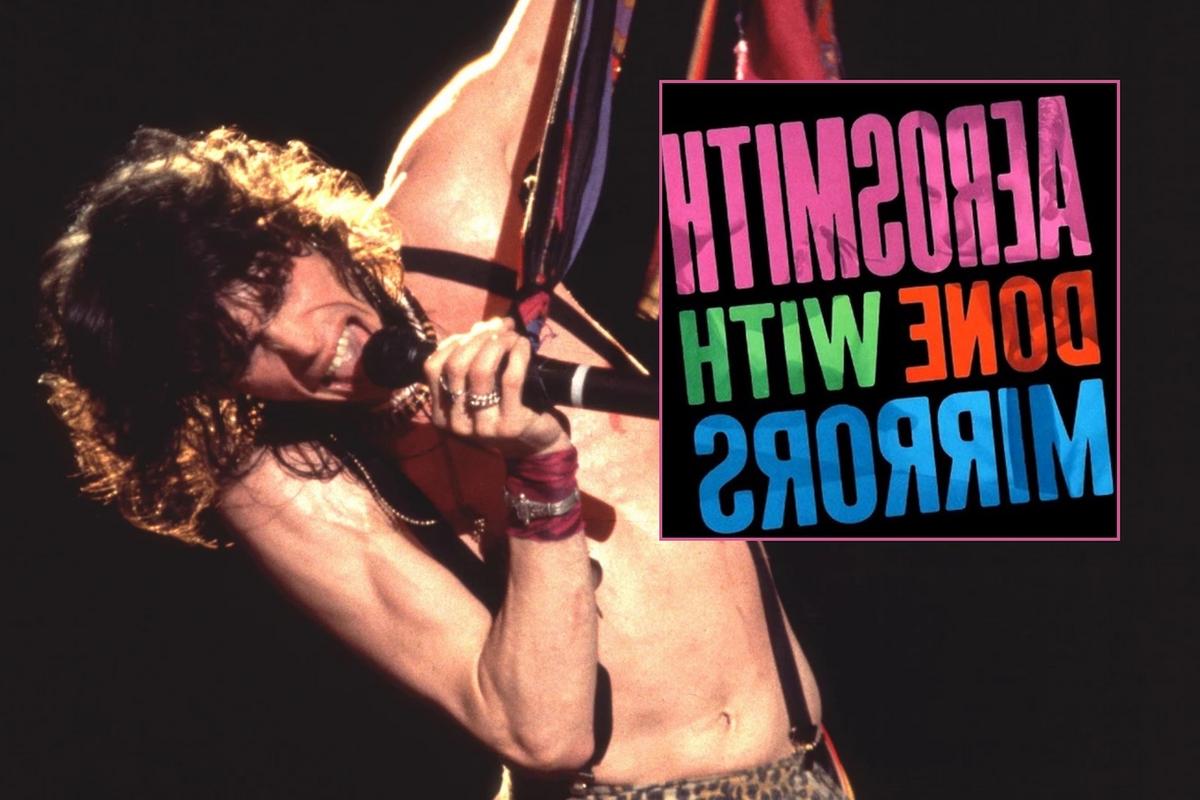The title of Aerosmith‘s Done With Mirrors alluded to magic tricks and newfound sobriety. While the reunion of the band’s classic lineup certainly did feel miraculous, the latter reference was a bald-faced lie — and it helps explain why Done With Mirrors failed to pull Aerosmith out of their yearslong tailspin.
The first half of the ’80s was not kind to the Boston rockers. After conquering the previous decade with their signature brand of sleazy, monolithic hard rock, Aerosmith was torn apart by a cocktail of drugs, infighting and dwindling commercial fortunes. Guitarist Joe Perry quit in 1979 and guitarist Brad Whitford followed suit in 1981, leaving Aerosmith — to paraphrase the title of their 1982 album — caught between a rock and a hard place.
Fast-forward a few years, and the members of Aerosmith realized they hated being failures more than they hated each other. Perry and Whitford rejoined the fold, and Aerosmith set out to make a new album that would return them to their former glory.
READ MORE: When Aerosmith Launched Their Back in the Saddle Tour
There was just one problem: Aerosmith was unwilling to relinquish the old habits that had gotten them into such a mess in the first place. Consequently, Done With Mirrors vastly undersold expectations. But musically, it marks a fascinating inflection point in the band’s career — one last gasp of hellacious blues-rock boogie before they pivoted to MTV-friendly pop-metal and rocketed into the stratosphere.
Aerosmith’s Train Keeps A-Rollin’ on ‘Done With Mirrors’
Done With Mirrors gets off to a rip-roaring start with “Let the Music Do the Talking,” a revamped version of the 1980 Joe Perry Project single with new lyrics from Steven Tyler. The Demon of Screamin’ sounds more robust than he had in years, buoyed by Perry’s sizzling slide guitar and Joey Kramer’s athletic drumming.
READ MORE: Aerosmith Album Opening Songs Ranked Worst to Best
“My Fist Your Face,” “Gypsy Boots” and “The Hop” are similarly high-octane rockers that find the whole band chugging like a freight train, getting by on sheer muscle memory. The batshit lyrics are beside the point — it’s just great to hear Aerosmith lock into their one-of-a-kind groove again.
Other tracks, such as “The Reason a Dog” and “She’s on Fire,” take a more languid, blues-based approach. They’re not quite hooky in the conventional sense, but they bristle with a dark intensity that was fairly uncommon for Aerosmith. Tyler and Perry were still rediscovering their rhythm as cowriters, but they tossed off some interesting (if not top-tier) ideas in the process.
Aerosmith Could Still Rock — But They Sounded Tragically Unhip
A few crucial elements prevented Done With Mirrors from becoming a bona fide Aerosmith classic. Primarily, their partnership with Van Halen and Doobie Brothers producer Ted Templeman sounded better in theory than in practice.
Although reports of the album’s dismal production are greatly exaggerated, Done With Mirrors does lack the clarity and bite of early Van Halen records or Aerosmith’s peak ’70s work with producer Jack Douglas. And because the band was writing and recording on the fly, some songs lack the sonic bells and whistles to send them over the top. They have great bones but lackluster aesthetics.
READ MORE: Top 15 ’80s Aerosmith Songs
Done With Mirrors also had to compete with hot new releases from the likes of Motley Crue and Ratt — bands massively influenced by Aerosmith, who, ironically, now made them seem tragically unhip by comparison. Glam metal was approaching its zenith in late 1985, and the mid-tempo blues-rock jams on Done With Mirrors didn’t stand a chance against “Lay It Down” or “Home Sweet Home.”
How the Failure of ‘Done With Mirrors’ Forced Aerosmith to Change
After Done With Mirrors stalled around a meager 400,000 copies, it was clear Aerosmith desperately needed to change tack. Buoyed by their “Walk This Way” collaboration with Run-D.M.C., Aerosmith teamed up with producer Bruce Fairbairn and a team of outside songwriters for 1987’s Permanent Vacation. (They also finally got sober.) The album sold 5 million copies and reinvented Aerosmith as pop-metal pinups, and they never looked back. Pop hooks and power ballads were the price of enduring success, and Aerosmith was happy to pay.
READ MORE: Top 20 Aerosmith Songs
As a result, Done With Mirrors remains the last vestige of Aerosmith’s no-frills hard rock era. If it had performed better — an implausible scenario given the environment into which it was released — Aerosmith’s story might have veered in a wildly different direction. Instead, it remains a very good, occasionally great curio in their catalog that fans overlook at their own peril.
Aerosmith Albums Ranked
Any worst-to-best ranking of Aerosmith must deal with two distinct eras: their sleazy ’70s work and the slicker, more successful ’80s comeback. But which one was better?
Gallery Credit: Ultimate Classic Rock Staff



